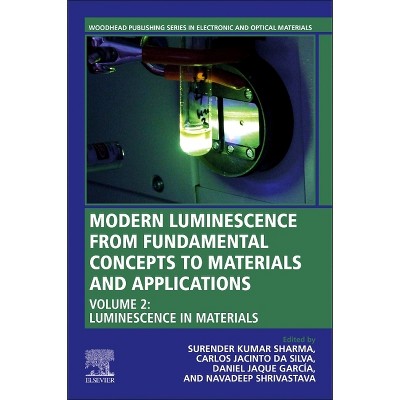About this item
Highlights
- Fundamental Design of Steelmaking Refractories Comprehensive up-to-date resource organizing fundamental aspects for the design and performance of steelmaking refractories Fundamental Design of Steelmaking Refractories provides a fundamental understanding in the design of steelmaking refractories, in detail and all in one source, enabling readers to understand various issues including how heat and mass transfer occurs throughout the refractory, how matrix impurity or their contact affects the phases, and how invisible defects form during refractory manufacturing that eventually facilitates to analyze wear, corrosion, and performance of different refractory linings for primary and secondary steelmaking vessels, tundish, and continuous casting refractories.
- About the Author: Debasish Sarkar, PhD, is currently Professor of the Department of Ceramic Engineering, National Institute of Technology, Rourkela, India.
- 528 Pages
- Technology, Materials Science
Description
About the Book
"The first part of the book accentuates the valuable basics of 'Heat and Mass Transfer', 'Equilibrium and Non-equilibrium phases', 'Packing and Stress in Compaction', 'Degree of Ceramic Bonding', 'Thermal and Mechanical Behavior', and 'High Temperature Corrosion' including relevant finite element analysis in the perception of composition design, manufacturing, and failure mechanism of steelmaking refractories. While considering the steelmaking refractories, a detailed 'Refractories for Primary Steel Making', 'Refractories for Secondary Steel Making', 'Refractories for Precast and Purging System', 'Refractories for Flow Control', 'Refractories for Continuous Casting', and 'Premature Refractory Life by Other Parameters', are essential to acme. These issues have been discussed in the second half of the book to fulfill the academic demand of undergraduate, postgraduate, and research scholars of ceramic engineering, metallurgical engineering, and mechanical engineering outlets who want to nurture in the refractory and steel sectors. The description of such cumulative basic knowledge, collective shop floor data, and relevant failure analysis criteria makes sense and eventually stimulates the awareness of how to grasp and analyze a particular class of refractory for steelmaking. Refractory production, as fighting fit as their consumption, includes a certain degree of heat and mass transfer. Preliminary from the thermodynamics, heat and mass transfer mechanisms are being described, and eventually, an analogy is drawn in Chapter 1. In-situ phase formation during manufacturing and transformation in the presence of impurities are common phenomena in refractory, and thus fundamentals of binary and ternary equilibrium phases and non-equilibrium phases are described in Chapter 2. Optimum compaction and load are a prerequisite to press organic-bonded refractories. A low load regime results in low green density, whether high load beyond critical stress consequences spring back and expedite lamination that eventually produces defect and early stage failure during the maneuver. Such phenomena are deliberated in Chapter 3. Industrial-scale production demands a uniform temperature distribution throughout the kiln to form adequate ceramic bonding or sintering of compact mass otherwise results in premature refractory failure. In this regard, Chapter 4 describes the initial and final stages of sintering, densification, grain growth, and their shape in the matrix. Even with refractory processing failure, meticulous thermal and mechanical stress cracking, severe wear aggravated by abrasion, and corrosion are unavoidable in refractory practice and applications. In these concerns, Chapter 5 highlights the thermal and mechanical behavior, and Chapter 6 underscores the high temperature corrosion mechanism with a relevant model"--Book Synopsis
Fundamental Design of Steelmaking RefractoriesComprehensive up-to-date resource organizing fundamental aspects for the design and performance of steelmaking refractories
Fundamental Design of Steelmaking Refractories provides a fundamental understanding in the design of steelmaking refractories, in detail and all in one source, enabling readers to understand various issues including how heat and mass transfer occurs throughout the refractory, how matrix impurity or their contact affects the phases, and how invisible defects form during refractory manufacturing that eventually facilitates to analyze wear, corrosion, and performance of different refractory linings for primary and secondary steelmaking vessels, tundish, and continuous casting refractories.
Other specific sample topics covered in Fundamental Design of Steelmaking Refractories include:
- Phase formations and correlation with impurity effects and refractory processing shortcomings
- Stress, wear, and corrosion to design refractories and performance statistics of steelmaking refractories
- Equilibrium and non-equilibrium phases, packing, stress and defects in compaction, and degree of ceramic bonding
- Thermal and mechanical behavior, flow control mechanisms, continuous casting refractories, and premature refractory damage
- Precast and purging system, consistent supply and time management, and preventive maintenance in operation
With its complete coverage of the subject, Fundamental Design of Steelmaking Refractories fulfills the academic demand of undergraduate, postgraduate, and research scholars of ceramic engineering; metallurgical engineers and mechanical engineering outlets that want to nurture in the refractory and steel sectors will also find value in the text.
From the Back Cover
Comprehensive up-to-date resource organizing fundamental aspects for the design and performance of steelmaking refractories
Fundamental Design of Steelmaking Refractories provides a fundamental understanding in the design of steelmaking refractories, in detail and all in one source, enabling readers to understand various issues including how heat and mass transfer occurs throughout the refractory, how matrix impurity or their contact affects the phases, and how invisible defects form during refractory manufacturing that eventually facilitates to analyze wear, corrosion, and performance of different refractory linings for primary and secondary steelmaking vessels, tundish, and continuous casting refractories.
Other specific sample topics covered in Fundamental Design of Steelmaking Refractories include:
- Phase formations and correlation with impurity effects and refractory processing shortcomings
- Stress, wear, and corrosion to design refractories and performance statistics of steelmaking refractories
- Equilibrium and non-equilibrium phases, packing, stress and defects in compaction, and degree of ceramic bonding
- Thermal and mechanical behavior, flow control mechanisms, continuous casting refractories, and premature refractory damage
- Precast and purging system, consistent supply and time management, and preventive maintenance in operation
With its complete coverage of the subject, Fundamental Design of Steelmaking Refractories fulfills the academic demand of undergraduate, postgraduate, and research scholars of ceramic engineering; metallurgical engineers and mechanical engineering outlets that want to nurture in the refractory and steel sectors will also find value in the text.
About the Author
Debasish Sarkar, PhD, is currently Professor of the Department of Ceramic Engineering, National Institute of Technology, Rourkela, India. Prof. Sarkar has been working in the subject area of nanostructured ceramics, ceramic processing, iron and steel making refractories. process optimization and finite element analysis of structural ceramics for 26 years. He has published numerous peer-review articles, national and international patents, prototype developments, and books on the projected topics.












